Jesus of Nazareth (miniseries)
8.4 /10 1 Votes
8.1/10 TV Genre Biography, Drama, History Duration Language English | 8.7/10 IMDb Final episode date April 24, 1977 Country ItalyUnited Kingdom | |||||||||||||||||||||||||||||||||
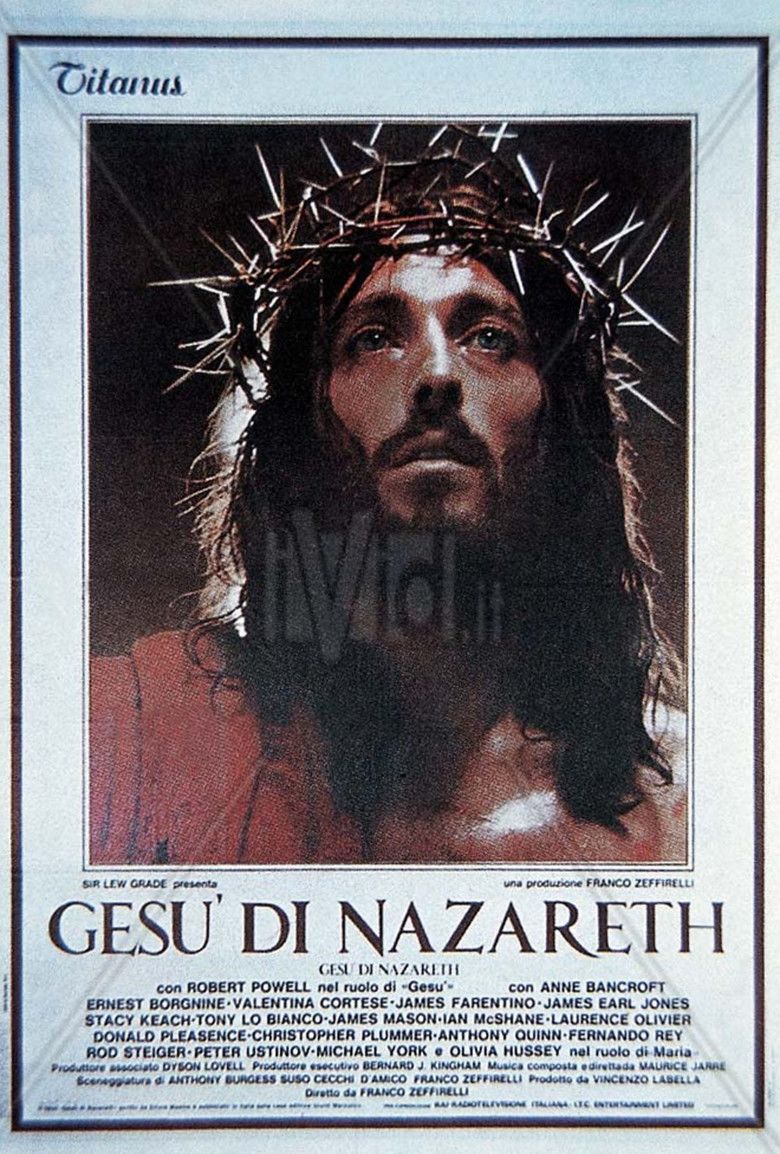 | ||||||||||||||||||||||||||||||||||
Release date 27 March 1977 (1977-03-27) – 24 April 1977 (1977-04-24) Nominations British Academy Television Award for Best Actor Episodes 3 Episode 3Season 1 - Mar 31 - 2002, 3 Episode 3, 2 Episode 2Season 1 - Mar 31 - 2002, 2 Episode 2, 1 Episode 1Season 1 - Mar 31 - 2002, 1 Episode 1, 1 Episode 1Season 1 - Mar 31 - 2002, 1 Episode 1 Cast (Jesus), (Maria Magdalena), (Der Zenturio), (Die Ehebrecherin), (Simon Petrus), (Balthasar) Similar Mary of Nazareth (film), The Bible (miniseries), A.D. The Bible Continues | ||||||||||||||||||||||||||||||||||
Jesus of Nazareth (Italian: Gesù di Nazareth) is a 1977 British-Italian television miniseries directed by Franco Zeffirelli and co-written by Zeffirelli, Anthony Burgess, and Suso Cecchi d'Amico which dramatises the birth, life, ministry, crucifixion and resurrection of Jesus. It stars Robert Powell as Jesus. His extraordinary acting was highly praised by critics. The miniseries features an all-star cast of famous American and European actors, including eight Academy Award winners: Anne Bancroft, Ernest Borgnine, Laurence Olivier, Christopher Plummer (subsequent winner), Anthony Quinn, Rod Steiger, James Earl Jones (subsequent honorary Academy Award winner), and Peter Ustinov.
Contents
- jesus of nazareth part 1 robert powell
- Plot summary
- Cast
- Production
- Powells portrayal of Jesus
- Subsequent broadcasts and versions
- Reception
- Awards and nominations
- Criticism
- Narrative deviations from the Gospels
- Quasi sequel
- References
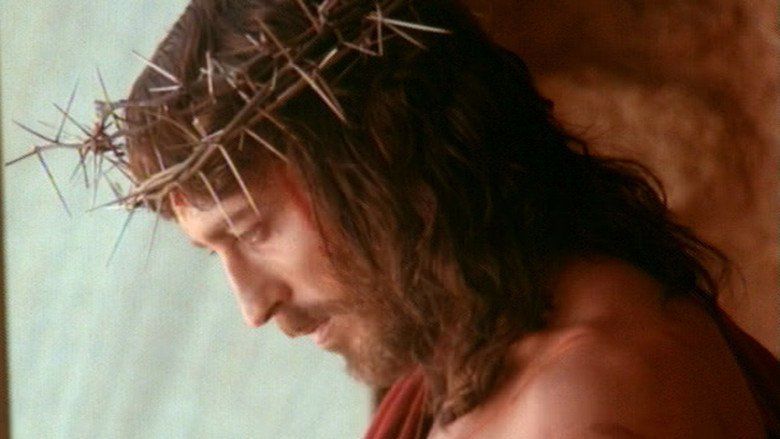
Extra-biblical traditions were used in the writing of the screenplay and some characters (such as Zerah) and situations were invented for the film for brevity or dramatic purposes. Notably, Jesus of Nazareth depicts Judas Iscariot as a well-intentioned man initially, but later as a dupe of Zerah who betrays Jesus largely as a result of Zerah's false platitudes and pretexts. However, in accordance with the Gospels, the film depicts Nicodemus and Joseph of Arimathea as sympathetic members of the Sanhedrin. Many of the miracles of Jesus, such as the changing of water into wine at the wedding at Cana, the transfiguration, and the calming of the storm are not depicted, although Jesus healing the blind man and the crippled woman on Sabbath, the feeding of the multitude, and the raising of Lazarus from the dead are presented here.
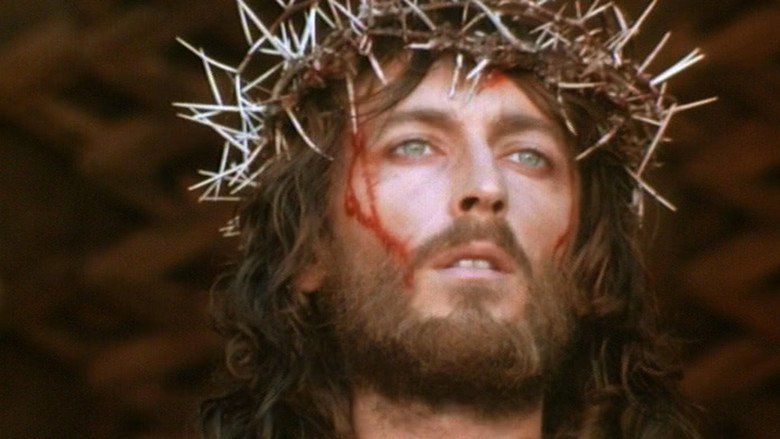
Jesus of Nazareth premiered on the Italian channel Rai 1 on 27 March 1977 and was first aired in the United Kingdom on the ITV Network on 3 April 1977. It is generally high praised.This miniseries considered as a masterpiece about Jesus life history.
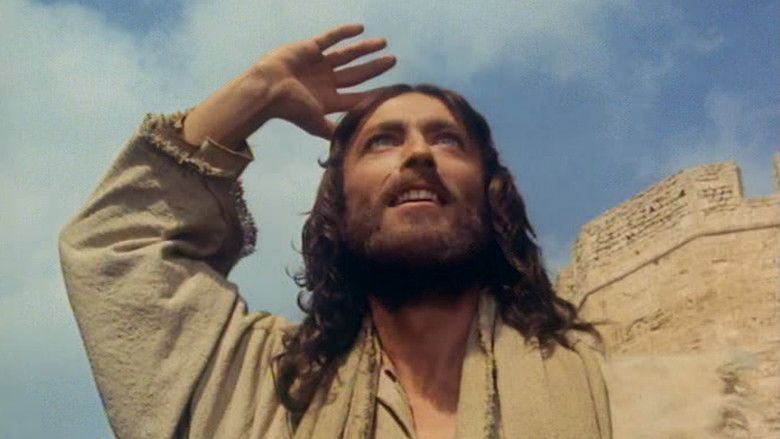
jesus of nazareth part 1 robert powell
Plot summary
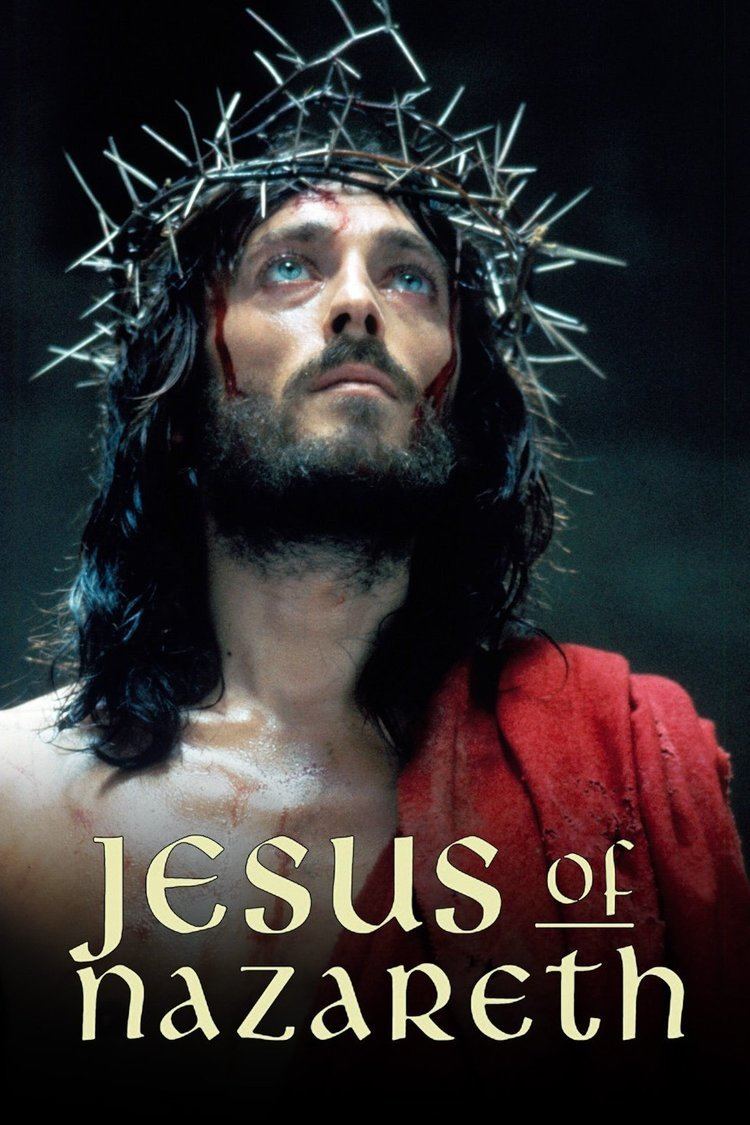
The storyline of Jesus of Nazareth is a kind of cinematic Diatessaron, or "Gospel harmony", blending the narratives of all four New Testament accounts. It takes a fairly naturalistic approach, de-emphasising special effects when miracles are depicted and presenting Jesus as more or less evenly divine and human. The familiar Christian episodes are presented chronologically: the betrothal, and later marriage, of Mary and Joseph; the Annunciation; the Visitation; the circumcision of John the Baptist; the Nativity of Jesus; the visit of the Magi; the circumcision of Jesus; the Census of Quirinius; the flight into Egypt and Massacre of the Innocents; the Finding in the Temple; the Baptism of Jesus; the woman caught in adultery; Jesus helping Peter catch the fish; the Parable of the Prodigal Son (Luke 15: 11-32); a dialogue between Jesus and Barabbas (non-biblical); Matthew's dinner party; the Sermon on the Mount; debating with Joseph of Arimathea; the curing of the blind man at the pool; the Raising of Lazarus (John 11:43); the Feeding of the Five Thousand; the Entry into Jerusalem; Jesus and the money changers; dialogue with Nicodemus; the Last Supper; the betrayal of Jesus by Judas; Peter denying Christ and repenting of it; the judgment of Jesus by Pilate ("Ecce Homo"); the Johannine Passion Narrative (John 18-19; including the Agony in the Garden); the Carrying of the Cross; the Crucifixion of Christ (Laurence Olivier's Nicodemus recites the "Suffering Servant" passage [Isaiah 53:3-5] as he looks helplessly on the crucified Messiah); the discovery of the empty tomb; and an appearance of the Risen Christ to his Disciples. The film’s storyline concludes with the non-Biblical character Zerah and his colleagues gazing despairingly into the empty tomb. Zerah laments "Now it begins. It all begins".
Cast
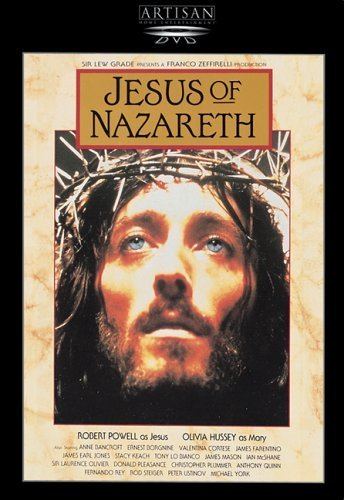
Starring
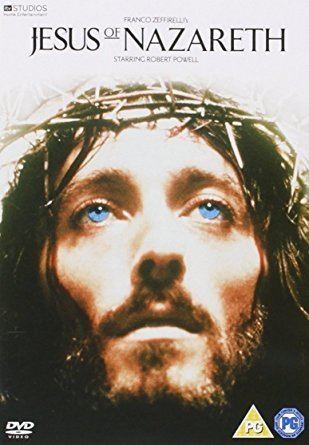
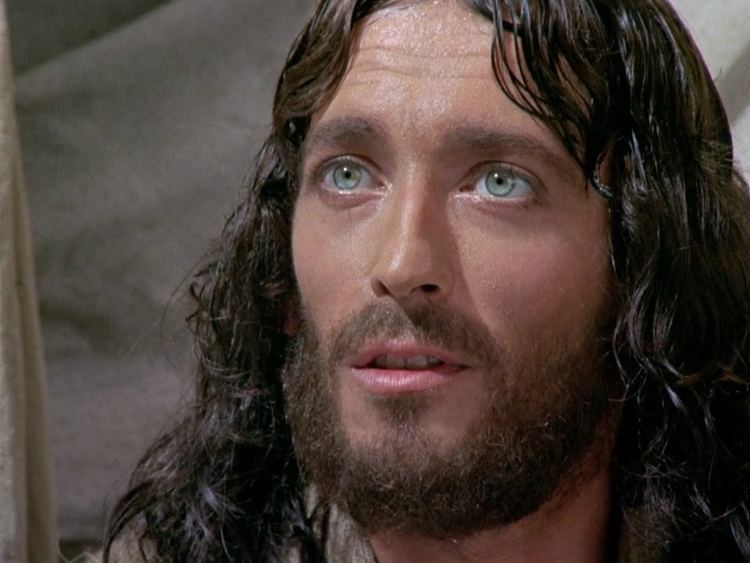
Guest Stars
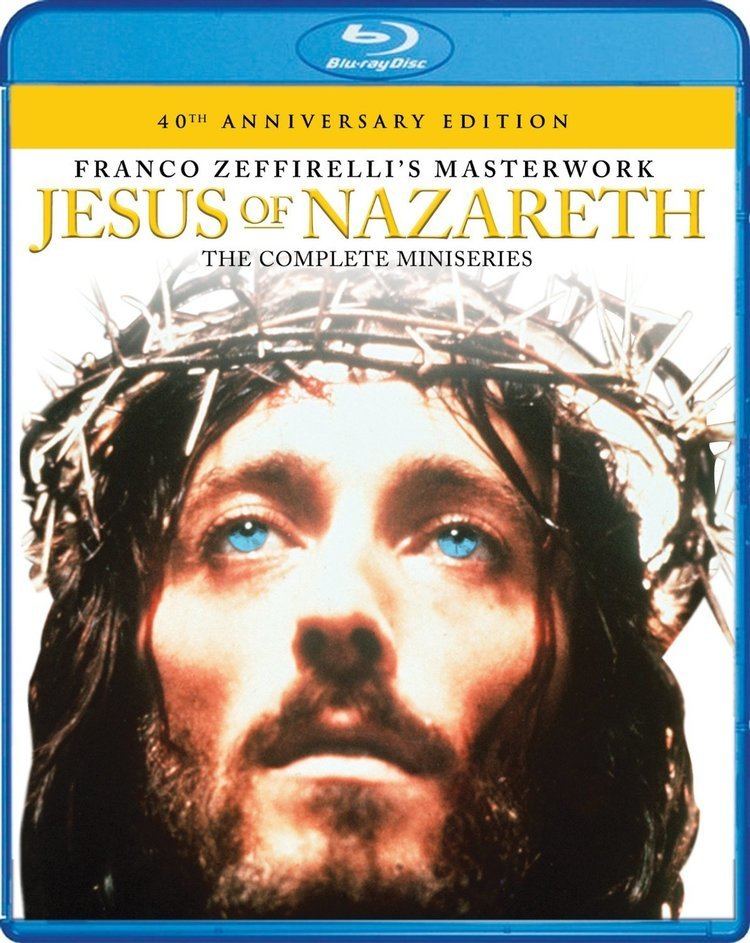
And


Also Starring
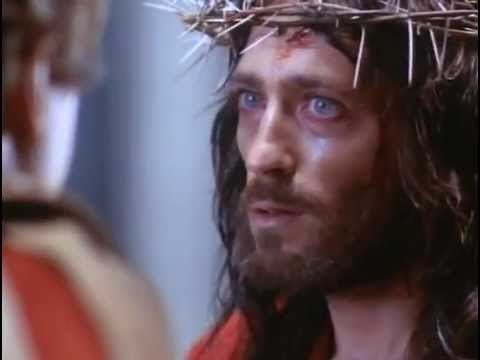
With
Co-Starring
Production
The miniseries was conceived when Lew Grade was received by Pope Paul VI, who congratulated him on the making of Moses the Lawgiver (1974), a television film starring Burt Lancaster and which was produced by Grade's ITC Entertainment and the Italian television network RAI. At the end of the interview, the Pope told him he hoped his next project would be about the life of Jesus. Two weeks later, while dining with an RAI executive, Grade told him he intended their companies to prepare such a film. The role of director was offered to Franco Zeffirelli - a religious Roman Catholic who knew the Pontiff from his days as the Archbishop of Milan, when he often visited Zeffirelli's school - on the Pope's initiative, who insisted that either he would make Jesus of Nazareth or no one else. The director rejected the proposal at first, but Grade finally convinced him to agree; he accepted the job shortly before Christmas 1973.
Scriptwriter Anthony Burgess later recounted the launching of the project in an essay entitled "Telejesus (or Mediachrist)":
The notion of making a six-hour television film on the life of Jesus Christ was proposed by an enobled British Jew, with the golden blessing of an American automobile corporation. The project struck some as blasphemous, others as ecumenical. Lord Grade, who was then Sir Lew Grade, presided over a massive press conference in the Holy City, (Rome), and said all that was available to be said — namely, that there would be this film, that Zeffirelli would direct it, and that Burgess would write it. Fired by this announcement, the Romans laid on a great, as it were, First Supper, which the Chief Rabbi of Rome attended, as well as various cricket-playing British ecclesiastics. Sir Lew Grade was made a Cavaliere of the Republic. The Pope was noticeably absent.
Both Grade and Zeffirelli insisted their adaptation of Jesus' life should be 'ecumenical', coherent, even to non-believers, and 'acceptable to all denominations'. To ensure the film's accuracy, the producers consulted experts from the Vatican, the Leo Baeck Rabbinical College of London, and the Koranic School at Meknes, Morocco. However, when Zeffirelli asked Rabbi Albert Friedlander to help him create Jesus' Bar Mitzvah scene, the latter replied that such ceremonies were practiced only from the 15th century. The director, however, insisted on including it, and Friedlander tried to teach child actor Lorenzo Monet to read a short portion of the Pentateuch in Hebrew. Monet, however, mumbled it and the director was not satisfied (in the film, boy Jesus reads mostly in English).
Principal photography was carried out in Morocco and Tunisia from September 1975 to May 1976. The synagogue scenes were shot with extras from the Jewish community in the island of Djerba. The city of Monastir served as 1st Century Jerusalem. Ernest Borgnine, who portrayed Cornelius the Centurion, recalled that since regulations required hiring local extras—most with poor English—for many of the smaller roles, they had to be dubbed. Zeffirelli decided to avoid recording sound altogether in many parts, and simply send the principal actors to dub their own characters in the studio later. The standing sets of the film were later used by the British comedy troupe Monty Python for their religious satire Life of Brian (1979).
There are various reports regarding the size of the miniseries' budget: Presbyterian Survey stated it was $12 million, The Listener cited the figure of £9 million (roughly $16 million), while Third Way stated it cost £11.5 million (roughly $20 million). Other sources give the sum of $18 million. In his autobiography, Lew Grade wrote that "in the final accounting, Jesus of Nazareth took $45 million."
Powell's portrayal of Jesus
The producers at first considered choosing a well-known star, who would draw a large audience, for the role of Christ. The first actor thought of was Dustin Hoffman, and Al Pacino was also a candidate. However, the filmmakers feared that their looks would not match the popular perception of Jesus held by the American public. Eventually, the character's North European appearance in the series was influenced by Warner Sallman's famous Head of Christ: Paul Harvey and Edward J. Blum wrote the show 'put Sallman's imagination in motion'. The Virgin Mary, too, was depicted "without regard to historical or ethnographic accuracy" by the "definitely Caucasian Olivia Hussey."
The idea to cast Robert Powell originated with Lew Grade's wife, Kathie Moody, who told her husband the actor had 'wonderful blue eyes' after watching him perform in a BBC television adaptation of Jude the Obscure. Powell came under severe criticism from religious groups for 'living in sin' with his companion, dancer Barbara Lord of Pan's People, while intending to portray Jesus. The couple married shortly before production began.
Powell rarely blinks throughout the entire film, mimicking, in this respect, H.B. Warner in 1927's The King of Kings and Max von Sydow in 1965's The Greatest Story Ever Told. This effect was a deliberate decision by Franco Zeffirelli. James Houlden commented that the result was 'a penetrating, unrelenting eye contact with Jesus'. A dark blue eyeliner was applied on set to accentuate Powell's blue eyes. Powell's portrayal has since become an often-used image in popular devotional art, and 'defined the visual image of Christ in the minds of the audience... Perhaps more than any other Jesus film.'
For the crucifixion scene, Powell starved himself on a diet of only cheese for 12 days prior to shooting "in order to look worn".[1]
Subsequent broadcasts and versions
NBC rebroadcast the series in 1981 and four more times through 1990. It was originally released as a three-tape VHS edition in the early 1980s under the Magnetic Video label. It was released later under the mainstream video label of CBS/FOX in 1986. Another three-tape VHS edition was released by LIVE Home Video in 1992 and again on 22 February 1995. Artisan Entertainment released the DVD version on two discs on 6 December 1999. In the UK, the original 1986 Polygram VHS (four tapes) was fully uncut and featured the full 386-minute version. The 2000 Carlton video (two tapes) featured a heavily abridged print running for 270 minutes. Although the Granada DVD is credited as the unedited print, it runs for 374 minutes and misses out two scenes - a private meeting between Judas Iscariot and Zerah, and the opening betrayal sequence during the Last Supper. This is the version that is broadcast most often.
The mini-series is broadcast every Easter and Christmas in many countries, including Greece on ANT1, and in the United States on History Channel and TBN.
The Region 1 DVD is the original 1977 broadcast. The Region 2 Carlton DVD released in the UK is substantially cut and runs to 270 minutes. The Dutch DVD release (also Carlton Region 2) has a running time of 365 minutes (the 399-minute running time stated on the cover is a misprint).
For Easter 2016, the UK's Sky Arts channel showed one part a day over the four days of Easter. The version they used was the extended four-part edition, totalling eight hours with advertising.
The mini-series ran on NBC as "The Big Event" in two three-hour instalments with limited commercials on Palm Sunday and Easter Sunday. Additional footage was added for a 1979 re-run and broadcast in four two-hour instalments. In the 1980s and 1990, the film was re-broadcast on NBC in three instalments of two- and three-hour episodes, released on VHS and DVD as one complete presentation with one set of credits.
Reception
Jesus of Nazareth premiered on the Italian channel RAI 1 on 27 March 1977. It was broadcast in five episodes, one shown every week until 25 April. On Palm Sunday, 3 April 1977 – the date of the airing of the second episode – the Pope endorsed the programme in his public address for the holiday and recommended the faithful to view it. The series enjoyed high ratings: the German Dominican friar and film critic Ambros Eichenberger reported that according to local surveys, 84% of the television owners in the larger cities watched the series. For example, the number of viewers for the third episode, aired on 10 April, was estimated to have been 28.3 million.
In the United Kingdom and in the United States, it was broadcast in two parts, albeit in different lengths, by the ITV network in the UK and by NBC in the US. In both countries, the first part was aired on 3 April and the second on Easter, 10 April 1977. During its original showing in the UK, Jesus of Nazareth had an estimated audience of 21 million viewers.
When the first episode was broadcast in the US, it was a major success. The New York Times reported it "swamped all competing programs on Sunday night", with overnight Nielsen ratings of 46% of the total audience in New York and 53% in Los Angeles. The miniseries as a whole received a Nielsen rating of 30.8 points, with each point representing approximately 712,000 television-owning homes, and an audience share of 50% nationwide, on both nights. The company calculated that Jesus attracted about 90 million viewers.
In West Germany, it was broadcast by ZDF in four episodes on the 19th, 21st, 23rd and 24 March 1978; 40% of the audience have viewed it.
Jesus of Nazareth turned into a massive commercial success and one of the most widely marketed and best-known productions about Christ's life. Lew Grade stated that it made "a net profit of $30 million."
Awards and nominations
Jesus of Nazareth received an Emmy Award nomination for Outstanding Special Drama or Comedy. Additionally, James Farentino, who portrayed St. Peter, received a nomination for Outstanding Performance by a Supporting Actor in a Comedy or Drama Special.
The miniseries was nominated for six British Academy Television Awards: Best Actor, Best Cameraman, Best Single Television Play, Best Editor, Best Costume Design and Best Sound. It won none.
Jesus of Nazareth won awards for Best Cinematography to Armando Nannuzzi, Best Costume Design to Lucia Mirisola and Best Production Design, to Mirisola again, from the Italian National Syndicate of Film Journalists.
Criticism
Before its initial broadcast, Jesus of Nazareth came under ideological fire from some American Protestant fundamentalists, led by Bob Jones III, president of Bob Jones University in South Carolina, and Dr. Bill Bright, because they felt the TV movie had to have the resurrection of Jesus Christ to be true to the Gospel account. Zeffirelli had told an interviewer from Modern Screen that the film would portray Jesus as "an ordinary man – gentle, fragile, simple". Jones interpreted this as meaning that the portrayal would deny Christ's divine nature. Without having watched the movie, Jones labeled it as "blasphemy." This sentiment was echoed by others, leading to the dispatch of 18,000 letters to General Motors, a company that had contributed $3 million towards the film's budget. In response to the controversy, General Motors withdrew its sponsorship, effectively forfeiting its investment. Procter and Gamble later stepped in to assume the sponsorship role, acquiring the U.S. rights to the film for a comparatively modest sum of approximately $1 million. Their financial support allowed the mini-series to be screened after a simulated resurrection was added at the suggestion of Dr. Ted Baehr, a theologian and media pundit, who was friends with the producer, Vincenzo Labella, and acquainted with the protesters. The scenes showed the empty tomb, with flashbacks to Jesus discussing his death and resurrection.
Narrative deviations from the Gospels
Although the film has been received as generally faithful to the Gospel sources, and more comprehensive than previous film versions, Zeffirelli and his screenwriters found it necessary to take some liberties with the scriptures for purposes of brevity and narrative continuity. Some of these deviations have a basis in time-honoured, extra-Biblical traditions (e.g., that the infant Jesus was visited by three "kings"; the Bible calls them "magi" or "astrologers", yet does not state how many there were). Other deviations were invented for the script:
Quasi-sequel
The success of this miniseries led, in 1985, to a kind of sequel, A.D., which wove a fictional story set in first-century Rome into Biblical and extra-biblical material based on the Acts of the Apostles. Although many of the same crew members worked on both series, the only key cast members to return were Tony Vogel, Ian McShane and James Mason, all playing different roles.
References
Jesus of Nazareth (miniseries) WikipediaJesus of Nazareth (film) IMDbJesus of Nazareth (film) TV.comJesus of Nazareth (miniseries) themoviedb.org
